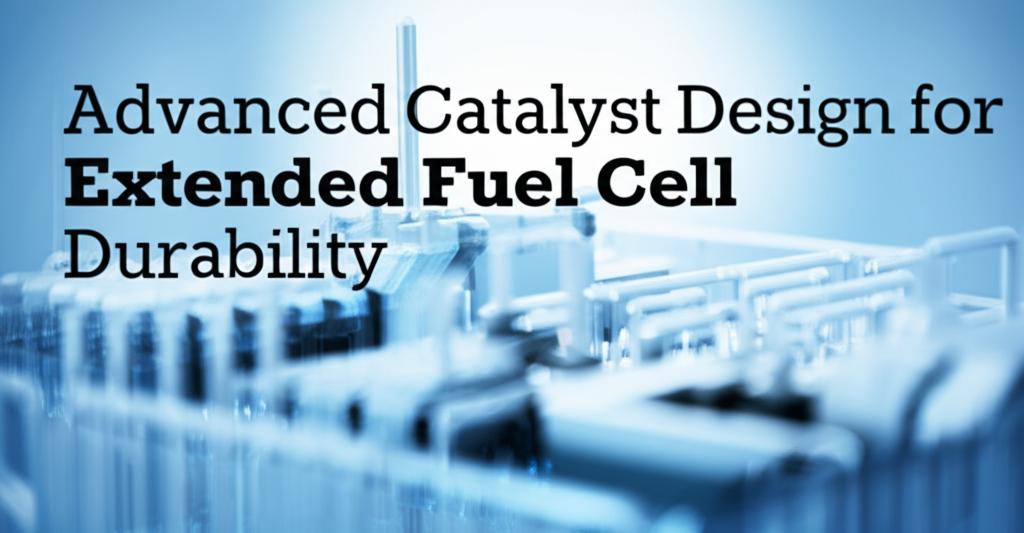Proton exchange membrane fuel cells (PEMFCs) represent a cornerstone technology for clean energy, offering high efficiency and zero emissions, particularly attractive for transportation and power generation. However, widespread adoption hinges significantly on improving the durability and reducing the cost of their core components, especially the electrocatalysts responsible for driving the necessary chemical reactions. Catalyst degradation, primarily involving the expensive platinum (Pt) group metals (PGMs), remains a major bottleneck, limiting the operational lifespan of fuel cells. Fortunately, significant strides are being made in advanced catalyst design to overcome these limitations.
Understanding Catalyst DegradationThe harsh operating environment within a PEMFC—characterized by acidity, humidity, and fluctuating electrical potentials—takes a toll on catalysts. Key degradation mechanisms include:
- Platinum Dissolution and Agglomeration: Platinum nanoparticles can dissolve into the electrolyte and redeposit, or merge (sinter/agglomerate) into larger particles. Both processes reduce the electrochemically active surface area (ECSA), diminishing catalyst activity and overall cell performance.
- Carbon Support Corrosion: Traditional carbon black supports can corrode under high voltage conditions, especially at the cathode. This corrosion leads to the detachment of Pt particles, loss of electrical conductivity, and structural collapse of the catalyst layer, further hampering performance and durability.
- Poisoning: Impurities in fuel or air streams (like carbon monoxide) can adsorb onto catalyst surfaces, blocking active sites and reducing reaction rates.
Researchers are employing multifaceted strategies to design catalysts that can withstand degradation for longer periods:
- Optimizing Platinum-Based Catalysts:
Alloying: Combining Pt with transition metals like cobalt (Co), nickel (Ni), iron (Fe), or copper (Cu) is a proven strategy. Alloying modifies Pt's electronic structure, enhancing its intrinsic activity and stability. Ordered intermetallic alloys (e.g., PtCo, PtNi) show particular promise due to strong metallic bonding that helps prevent the leaching of the less noble metal and stabilizes the Pt structure. Research extends to ternary, quaternary, and even high-entropy alloys (HEAs) containing five or more elements, which offer thermodynamic stabilization and tunable properties for enhanced durability.
Nanostructure Engineering: Controlling the size, shape, and architecture of catalyst nanoparticles influences both activity and stability. Techniques focus on creating ultrafine nanoparticles, specific shapes like octahedra or nanowires which exhibit higher stability, and core-shell structures where a Pt-rich shell covers a less expensive or more stable core material.
Novel Architectures: Recent breakthroughs include embedding stabilizing elements within the catalyst structure. For instance, embedding clusters of cobalt oxide within platinum shells acts as an atomic interior scaffold, anchoring the platinum atoms, significantly reducing dissolution, and dramatically increasing projected lifetimes, potentially exceeding DOE targets manifold.
- Protective Measures and Advanced Supports:
Surface Coatings: Encapsulating Pt or Pt-alloy nanoparticles within thin, protective layers, such as carbon shells (graphene, amorphous carbon) or nitride coatings, physically shields the catalyst from dissolution and agglomeration without significantly hindering reactant access if designed correctly.
Corrosion-Resistant Supports: Replacing standard carbon black with more robust materials is crucial. Options include graphitized carbons, nitrogen-doped carbons (which enhance graphitization and particle dispersion), carbon nanotubes, and graphene. Non-carbon supports like transition metal oxides or carbides are also being explored for superior corrosion resistance.
Support Interaction and Confinement: Strong interaction between the catalyst particle and its support enhances stability. Furthermore, confining catalyst nanoparticles within porous structures, such as those derived from metal-organic frameworks (e.g., ZIF-8), can physically prevent particle detachment and agglomeration.
- Exploring PGM-Free Alternatives:
To drastically cut costs, intensive research focuses on catalysts free of platinum group metals. Materials based on transition metals (like Fe or Co) coordinated with nitrogen atoms within a carbon matrix (M-N-C catalysts, including single-atom catalysts) show increasing activity. While promising, achieving long-term stability comparable to Pt under demanding fuel cell conditions remains a primary challenge for PGM-free catalysts.
- Hybrid Catalyst Systems:
Combining the high activity of Pt nanoparticles with the potential cost-effectiveness and unique properties of PGM-free materials (like M-N-C supports) offers another pathway. Such hybrid catalysts aim to reduce Pt loading while potentially enhancing overall activity and stability through synergistic effects.
Future OutlookThe development of advanced catalysts is rapidly progressing, driven by sophisticated material synthesis techniques, advanced characterization methods (including operando techniques to study degradation in real-time), and computational modeling (like machine learning) to accelerate discovery. Strategies like alloying, nanostructural control, protective coatings, advanced supports, and novel architectures like embedded scaffolds are collectively pushing the boundaries of fuel cell durability. These innovations are crucial for enabling the widespread commercialization of PEMFCs, especially in demanding applications like heavy-duty transportation, where lifetimes of 25,000 hours and beyond are targeted. Continued research and engineering efforts in catalyst design are paving the way for more robust, cost-effective, and long-lasting fuel cell systems.

